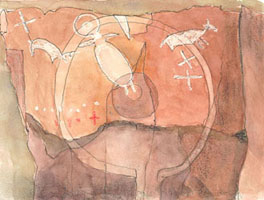
Sacred Sites, Sacred Places, edited by D.L. Carmichael, J. Hubert, B. Reeves, and A. Schanche. One World Archaeology, Volume 23, London, Routledge. 1994. Result of a World Archaeological Congress symposium on sacred sites. Has chapters on Ireland, North America (Big Horn Medicine Wheel, Wintu, Mescalero Apache, Hopi, Navajo, and Paiute), the Artic, Africa, Finland, Poland, Mexico, New Zealand, Australia. A fine introduction to “Sacred Beliefs and Beliefs of Sacredness” by Jane Hubert is especially useful.
From Black Land to Fifth Sun: the Science of Sacred Sites, by Brian Fagan, Helix Books/Addison-Wesley, Reading, Mass. 1998. Readable account of “how archaeologists use modern science to study ancient cosmologies and religious beliefs. Lots of excellent, up-to-date examples, from Upper Paleolithic cave art in Europe and the “shamanism” hypothesis for interpreting it, to the Aztec calendar. Includes British megalithis, ancient Egypt, and the famous (to “goddess people”) Neolithic site of Catal Huyuk in Turkey, and “snake priestesses” of Crete.
“For All Those Who Were Indian in a Former Life,” by Andy Smith (Cherokee), in Ecofeminism and the Sacred, edited by Carol J. Adams, pp. 168-171. Continuum, New York. 1993. Explains why many Indian people (especially those whose families still face poverty, oppression, and racism) find New Age and ecofeminist appropriation of Native American religious practice offensive. Pertains to what sorts of activities at sites are and are not considered respectful and appropriate. Explains that Indian religious practice is inextricable from family, community and other social concerns not shared by Euroamericans. Compassionately advises those of European descent to look to the earth-based religions in their own cultural traditions rather than to Native America for spiritual solace.
Frauds, Myths, and Mysteries: Science and Pseudoscience in Archaeology, by Kenneth Feder, Fourth Edition, 2002, McGraw-Hill/Mayfield, Boston. A mainstay of many NAU undergraduate and graduate courses. Readable, with amusing anecdotes interspersed with very concise explanations of science, scientific methods, and why some approaches are scientific and some are not. How scientists know what they know, and what scientists can’t know, clearly distinguished. Short section on “Arizona in the New Age”!
Shamanism and the Ancient Mind: A Cognitive Approach to Archaeology, by James L. Pearson, 2002, AltaMira Press, Walnut Grove, California. Scholarly review of the “neuropsychological model” of rock art interpretation, sometimes known as the “shamanistic model.” What we can and can’t know about past cognition and religion among ancient hunter-gatherers.
watercolor painting by Kathy Loo ©2003 Kathy Loo